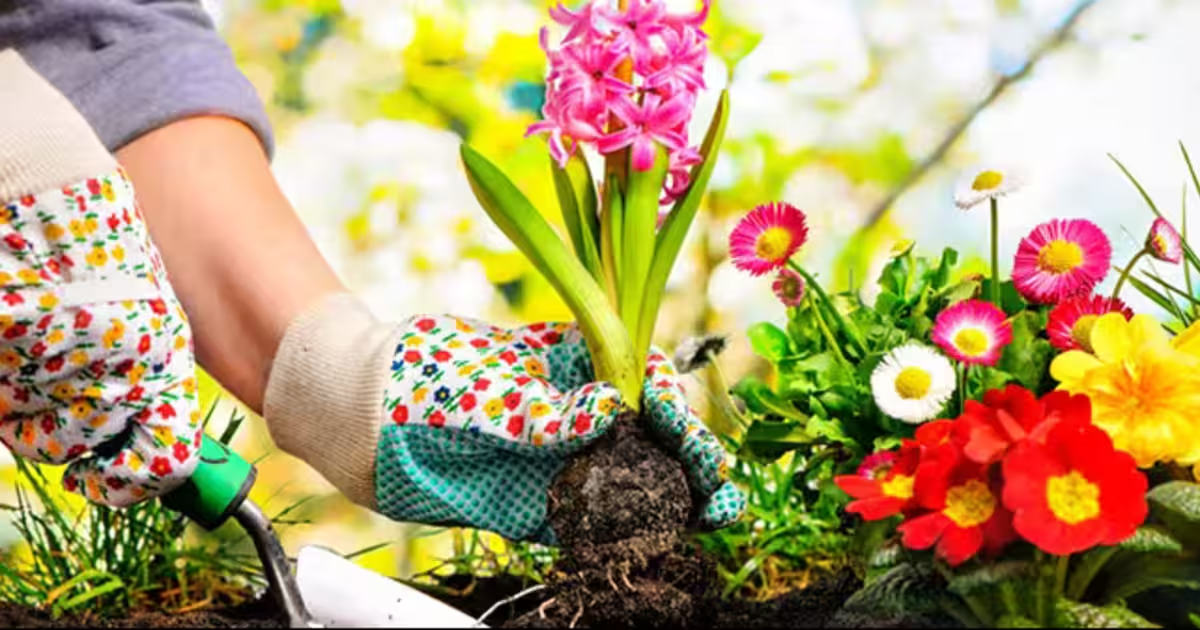If you spend a lot of energy on your flowers, you want healthy flowers. This is an article on how to identify whether flowers are healthy or not.
Table of Contents
Flowers are expensive, and the worst thing that may happen to your flower plant is to see it collapse and die soon after it starts blooming. Even the lushest flourishing plants can develop problems, but knowing how to tell the health of your flower plant can help you avoid problems.
So, what should you look for when determining whether your flower plants are healthy? That is where we come in handy. We have burned our midnight oil compiling tips to help you with that. But before that, let’s see why to cultivate flowers in the first place.
Benefits Of Healthy Flowers
Healthy Flowers can help uplift your spirit even when you are feeling low.
Healthy Flowers oxygenate the air, which stimulates brain cells and improves memory.
The presence of fresh flower plants in the home increases positive energy.
Flowering plants such as lavender promote restful sleep.
Being closer to flowers is beneficial to your mental health.
You can use hibiscus and roses in cooking. They enhance the flavour of food while also boosting your immune system.
Flowers also purify and depollute the air, allowing you to breathe clean air.
Now that we have seen the benefits of flowering plants let us look at a few tips to determine the health of your flower plant.
How To Tell The Health Of Your Flower Plants

The Greener The Plant, The Better
The colour of a plant can reveal a lot about its health. The green matter in a plant indicates that the cells can process the necessary nutrients for the entire plant.
You should be worried if your plant’s colour changes. A happy plant won’t discolour and will keep its original colour. Typical discolourations to be aware of include:
Excess water, most probably due to overwatering, can cause the yellowing of the leaves.
Whitened leaves indicate sunburns, and brown discolouration could indicate toxic accumulation.
Reasonable Flower Leaf Ratio
Flowers have a direct correlation with happiness. Happy plants produce flowers, resulting in a favourable flower-to-leaf ratio.
When plants produce a small number of flowers, it could indicate a nutritional deficiency or excess nitrogen. This will stimulate leaf growth but inhibit flower production.
When it comes to nutrition, keep in mind that balance is critical.
Flower Plants In Good Health Will Grow Quickly
Plants that get sufficient nutrients and sunlight grow faster and produce more foliage than plants that don’t.
If your plants lack nutrients or receive insufficient sunlight, they will not grow and appear weak and stunted. For efficient growth, your plant requires primary and secondary nutrients.
The primary nutrients include nitrogen, carbon, oxygen, potassium, and phosphorus.
The secondary nutrients include magnesium, calcium, and sulfur.
You can give your plant all the building blocks it needs to increase if it gets adequate nutrients.
Plants In Good Health Brighten Up
Your plant is supposed to be firm, and you should not allow it to wilt.
A wilting plant could result from underwatering or overwatering, which has already caused root rot. Water your plants regularly according to their needs, and if in doubt, you would rather be underwater than overwater since plants recoup from drought faster than root rot.
Healthy Roots
If you want to know if your plant is healthy, it will have a healthy root system, which means it will lead to sustained growth.
Signs of unhealthy roots are often overlooked and include any of this.
Roots emerging from the pot’s base indicate that your flower plant has outgrown its container. If you ignore this, the roots will eventually take up all of the space around the pot, leaving no room for soil or water, causing your plant to collapse or even die from nutrient deficiency.
Healthy Flowers Are Disease-Free

Healthy Flowers are free of pests and infections. Steady growth dark spots are signs that your plant suffers from a disease.
Bacterial and viral pathogens will change the colour of the leaves and roots of your plant, whereas fungal infections will appear as chalk-like powder on the stems and leaves. The presence of either of these indicates that the plant is unhealthy.
Let us take a look at the inverse signs of a Healthy Flowers.
No Wilting
If your plant’s leaves are falling, you should first determine how dry the soil is by inserting a finger to test it. If the soil is dry the answer is obvious: your plant requires water. Your plant may suffer from root if the soil is still wet.
Wilting is mainly due to insufficient water, but overwatering can also cause wilting. If you believe this, modify your watering so your plant does not receive too much water.
No Yellowing Leaves
Leaves may turn yellow and drop off naturally as they age, but there is a problem if this happens frequently or to younger plants.
If there is too much sun try to move the plant to a shadier spot. Also, ensure your plant isn’t exposed to a cold draft from an open window door or air conditioner.
Keep An Eye Out For Scorched Leaves
This problem indicates that the plant has received too much sunlight. Putting your plant in an opening may appear to be a good idea. However, too much light can cause leaf burn. This occurs when the plant is dehydrated due to a lack of water.
If you suspect your flower plant has a scorched leaf due to overexposure to sunlight, relocate and place it in a less light place. Examine the soil to see whether it is too dry, and add water if necessary. Also read this 10 Heath Flower Tattoo Designs and Meanings
Tips Turning Brown
If you notice brown tips on your leaves, it could be either you applied more fertilizer, or it is due to drier air.
To avoid brown tips, spray now and then and regulate the temperature to suit your plant.
Dropping Leaves
Overwatering can cause drooping. Excess water in the soil drowns out any air traps from which the roots get oxygen. When this happens, the roots lose their ability to absorb water and minerals. You may need to amend the soil with coir or gravel to make it more draining.
Conclusion
The health of your flower plants determines the quality of the flowers they produce. Ensure that your flower plants remain healthy and ensure there is no wilting; the flower plants are as green as they can be and are increasing as they should. Give them enough water and sunlight. Remove drying and wilting leaves from the plant to stop them from spreading the disease.
If you want to learn more about keeping your flower plants looking great year-round, call us! Our team at EyouAgro has years of experience in providing exceptional customer service while we help our customers grow happy and healthy flowers every day!

